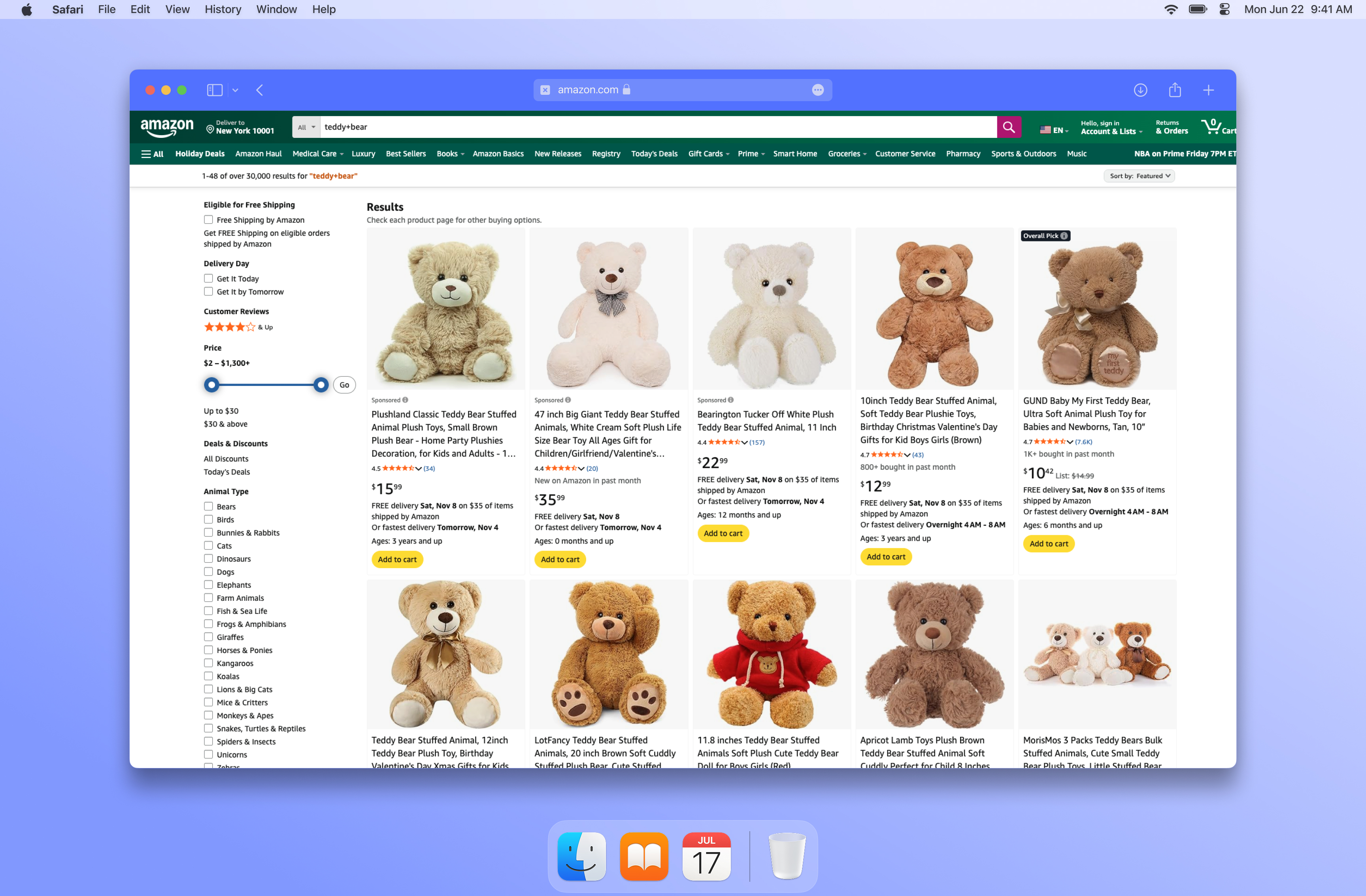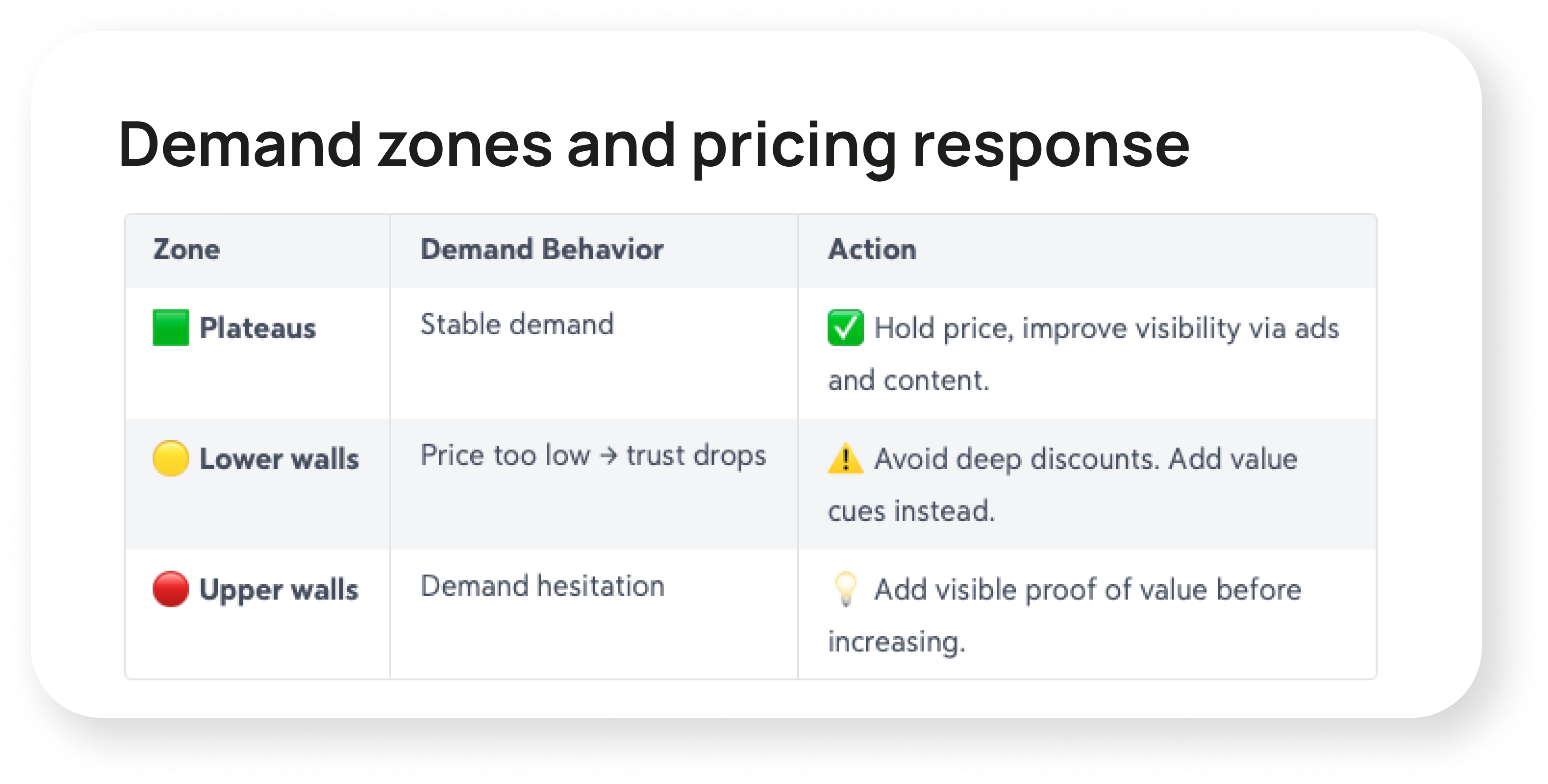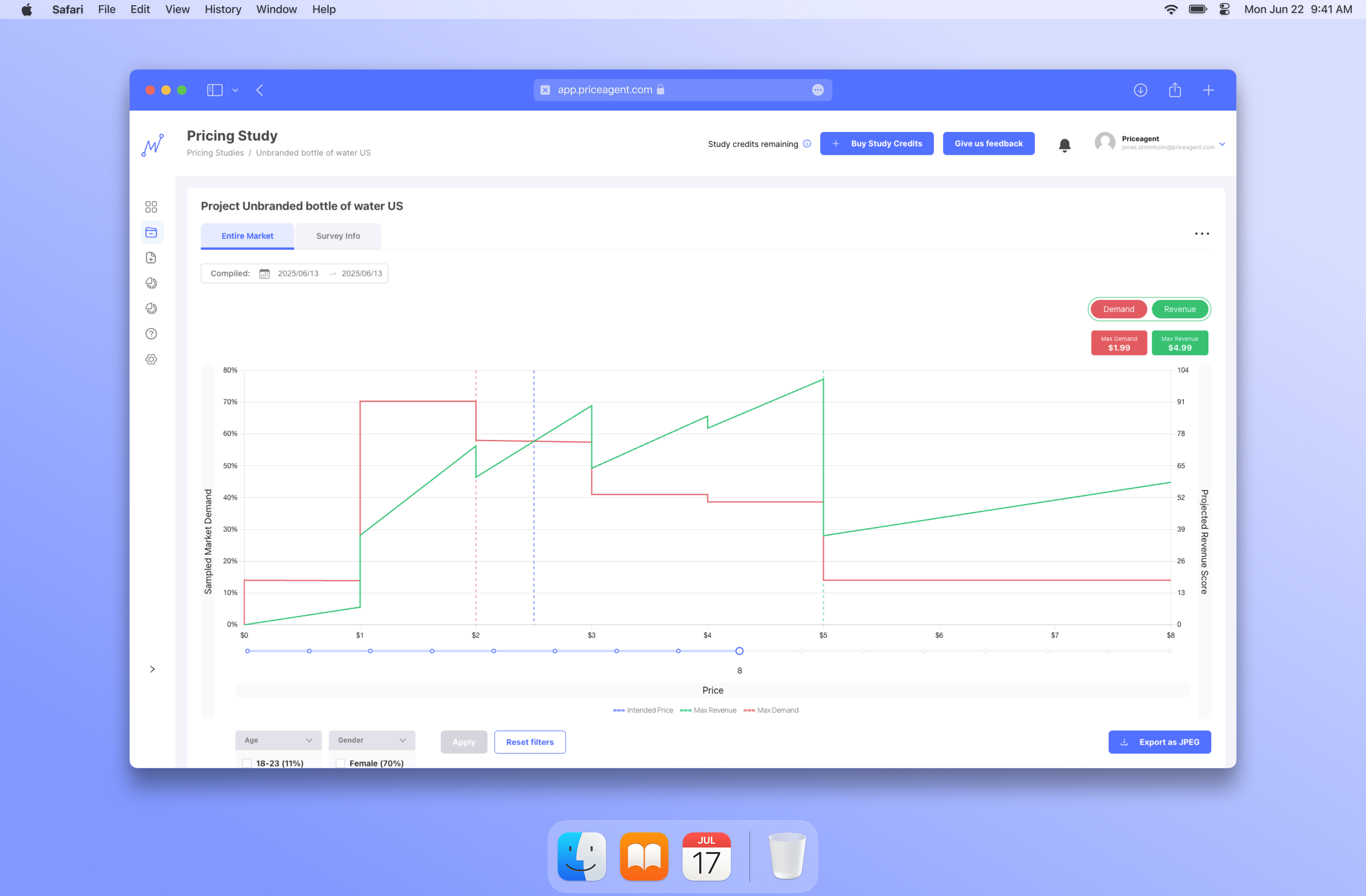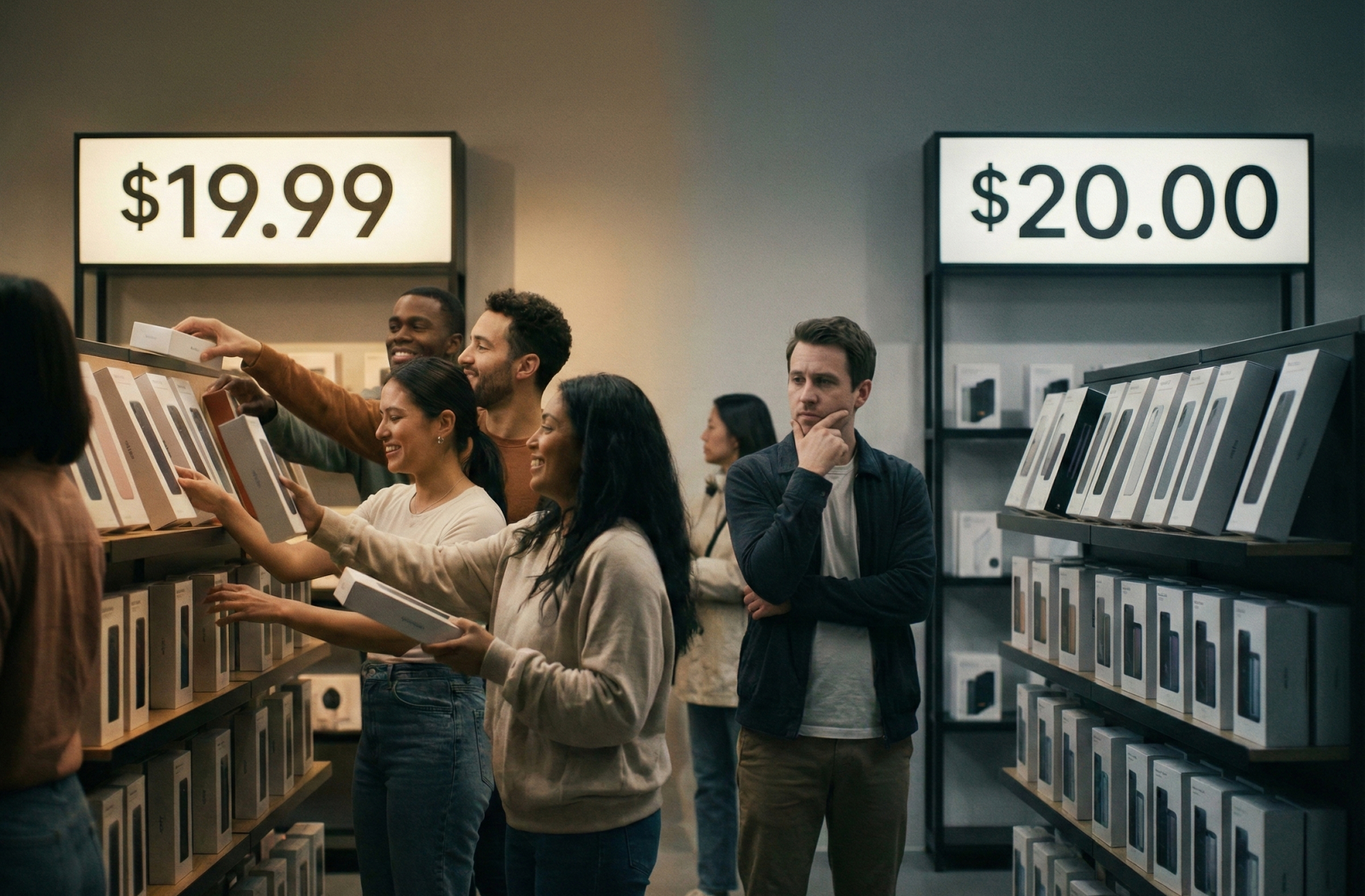Amazon pricing strategy: How to set the right price for your products
How to price your products on Amazon without racing to the bottom.

Summarize article with AI
Updated November 2025
Pricing is one of the hardest levers to get right on Amazon. The marketplace is built for speed, visibility, and comparison, which means your price is never seen in isolation. A few cents can decide whether you win the Buy Box or vanish from the first page. Set prices too low, and your margins collapse. Set them too high, and the algorithm quietly buries your listing.
For sellers in the US and EU, mastering pricing isn’t about matching competitors or reacting to repricers. It’s about understanding how price affects visibility, trust, and long-term profitability. The best sellers treat pricing as an active system that adapts to competition, psychology, and demand, not a one-time decision.
This guide explains how to set the right price for your products on Amazon by understanding how pricing works on the platform, avoiding common mistakes, and applying tactics that align with demand, not just competitors.
How pricing works on amazon: Competing in a system you don’t control
On Amazon, price doesn’t just decide profit, it decides visibility.
Every listing lives inside an engine that rewards relevance, trust, and competitiveness. Sellers who see pricing as a mechanical number-matching exercise end up in a race they can’t win. Sellers who understand why the algorithm behaves as it does can use pricing strategically, not reactively.
The buy box: Visibility, not discounting
Over 80% of Amazon purchases go through the Buy Box. Its algorithm blends dozens of factors: fulfillment speed, availability, seller history, and especially landed price (price + shipping).
Amazon rewards competitive value, not blind discounting. Trusted, Prime-eligible listings with solid reviews can keep the Buy Box at a higher price than newer sellers who undercut.
The goal is to price within the competitive range the algorithm deems fair, not constantly below it.

Fair pricing and the danger of blind competition
Amazon monitors prices across the marketplace and the wider web. Too high, and you risk suppression under the Fair Pricing Policy. Too low, and you can erode long-term value and train the algorithm to see your listing as volatile.
Cost-plus formulas and constant competitor watching both miss the real signal. Customer demand.
Amazon tracks conversion. When your price drives strong conversion without harming perceived value, it rewards visibility.
Dynamic pricing with guardrails
Automation helps only when it’s controlled. Before enabling repricers, define your boundaries:
- Minimum viable price: below this, conversion gains no longer offset margin loss.
- Maximum visible price: where conversion or click-through starts to fall.
- Value thresholds: levels where trust, reviews, or convenience outweigh price differences.
Each price change should be a controlled experiment to reveal demand, not a reaction to the cheapest competitor.
On Amazon, visibility follows demand, not price. Sellers who understand where demand strengthens or falls control both the Buy Box and the margin.
Common pricing mistakes that undermine sellers
Most pricing mistakes come from one thing: guessing.
Sellers imitate competitors, apply cost-plus logic, or let automation run unchecked. The outcome is predictable, shrinking margins and distorted value perception.

Mistake 1: Chasing the lowest price
Undercutting is not a growth strategy. It’s how sellers destroy pricing power. Lowering prices without understanding demand doesn’t teach you anything; it just trains customers to expect less.
Identify your floor price, where lowering price stops increasing demand. Anything beneath that burns profit without creating volume.
Mistake 2: Building from cost instead of demand
Customers don’t care what something costs to make. They care whether it feels worth the price. Starting from internal costs ignores perception. A healthy margin doesn’t come from adding percentages to cost, it comes from knowing how much value exists at each price point.
Cost-plus pricing gives you stability. Demand-led pricing gives you leverage.
Mistake 3: Copying competitors
Benchmarking should inform, not dictate. If your product has better reviews or features, your price should reflect that. If not, matching a competitor won’t fix perception.
Mistake 4: Using discounts as strategy
Discounts should confirm what you already know, not test what you don’t. Constant promotions erode trust and teach Amazon’s algorithm that your conversion only works when you’re discounted.
Are you discounting to learn, or because you’ve stopped learning?
Mistake 5: Setting and forgetting
Amazon changes daily. The sellers who win revisit their assumptions continuously and update their ranges based on real demand.
The opposite of intentional pricing is pricing on autopilot. Insight, not automation, is what protects margins.
Smart pricing tactics that strengthen demand, not destroy it
Most sellers use pricing tactics as panic buttons.
Smart sellers use them as execution of insight. Every tactic should serve a defined outcome that your demand data already supports.

Promotions: Only when you know the outcome
Run promotions to amplify, not to guess. If you already know where demand lifts, short campaigns can accelerate velocity or improve search visibility. Without that insight, promotions are just noise.
- Do: use them to time entry into new categories or boost credibility.
- Don’t: run them to “see what happens.”
Leverage psychological pricing (carefully)
Charm pricing, anchors, and shipping thresholds all work, but only when they align with real value. A .99 ending doesn’t fix a weak value story. The psychology works best when it confirms what customers already believe about fairness and quality.
Build value into the offer
Stop competing on identical units. Add perceived value without adding cost:
- Bundle complementary items.
- Offer tiered versions (basic vs premium).
- Reinforce the story behind your price: convenience, quality, or credibility.
Value creation beats price reduction every time.
Operate within the demand structure
Most products have multiple price walls and plateaus. Work within that structure instead of redrawing it.

Pricing tactics are execution, not exploration. Use them to reinforce what demand data already tells you.
Choose the right market position: Compete on value, not just price
Every price sends a signal. Before customers read your listing, they’ve already decided who you are based on your price.

Budget positioning: Precision, not panic
Budget pricing can work when it’s intentional. Define the lowest effective price. The one where conversion stops improving. Operate within that range confidently, optimizing logistics and reviews instead of cutting margin further.
Premium positioning: Earn the right to charge more
Premium pricing works when customers can see why. Social proof, superior quality, and trust build the ceiling higher. Don’t price premium first; build toward it through evidence and consistency.
Align price with your story
Your price must reinforce your brand narrative. If you claim sustainability but underprice, you signal contradiction. If you claim accessibility but price 30% above market, you create friction.
Regional reality: US vs EU
Demand signals differ by region. US buyers respond more to anchors and deals; EU buyers lean on transparency and reliability. Adapt the range, not just the currency.
Market position isn’t about being cheap or premium. It’s about how accurately your price reflects perceived value.
Finding your optimal pricing range: Where demand and profit meet
There’s no single “perfect” price. There’s only a range where your offer remains competitive, trusted, and profitable. The difference between guessing and knowing is how you find that range.

Step 1: Find your true floor. Where value ends
Your floor isn’t your cost. It’s where customers stop seeing value. A price below that point doesn’t grow demand; it damages credibility.
Step 2: Identify your ceiling. Where customers push back
Look for demand plateaus in your category: When does volume slow even for top sellers? What attributes justify higher prices Improving perceived quality, reviews, content and differentiation, lifts that ceiling.
Step 3: Validate with insight, not experiments
You don’t learn price by changing it on Amazon. You learn it before launch through structured demand data. Measured customer reactions and modeled purchase intent. That’s how you enter the market knowing your range, not guessing in public.
Step 4: Read elasticity as behavior
Elastic products require volume strategy. Inelastic ones allow premium strategy. Elasticity isn’t a formula, it’s feedback from your market about what people actually value.
Step 5: Keep pricing alive
Markets move. Revisit your assumptions quarterly: Have reviews or costs shifted your range? Have competitors altered the category floor? Pricing is a system that learns, not a setting you lock.
Enter Amazon with a validated range grounded in real demand. Don’t chase prices; understand them.
Conclusion: Price with insight, not instinct
Winning on Amazon isn’t about being cheapest or cleverest. It’s about knowing where your demand lives. The zone where customers see value and your business sustains profit.
Sellers who understand demand stop reacting and start shaping. Every price change becomes data. Feedback about how customers think and decide.
That’s what separates survival from growth.
Final takeaway:
The best Amazon pricing strategies start long before a listing goes live. Know your floor, your ceiling, and the walls in between, then enter the market with confidence.









